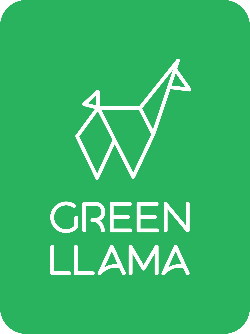How to Choose Pet-Safe & Baby-Safe Natural Cleaners: A Parent's Guide
by Kay Baker on Oct 09, 2025
How to Choose Pet-Safe & Baby-Safe Natural Cleaners: A Parent’s Guide
Author: Kay Baker, MS, OTR/L — CEO & Co-Founder • Reviewed by: Matthew Keasey, Ph.D. — Chief Science Officer • Last reviewed: October 9, 2025
Transparency note: Educational guidance with linked sources. Not medical or veterinary advice. 24-hour correction pledge — spot an error? We’ll review and update within 24 hours.
As a parent or pet owner, “clean” is more than shine — it’s peace of mind. When a baby crawls or a pet licks their paws, residue matters. Labels can be confusing, so here’s a simple, science-smart framework to choose products that are truly safer for little hands, curious noses, and sensitive paws.
For a broader primer on natural cleaning, see our Ultimate Guide to Natural Cleaning Products.
The Red-Flag List: Ingredients to avoid
Phthalates (often hidden in “fragrance”): Linked in human and animal studies with endocrine (hormone) disruption; transparency is key — choose true fragrance-free to avoid hidden phthalates. CDC review on endocrine-disrupting chemicals; NIEHS overview.
Ammonia: A potent respiratory and eye irritant; higher levels can injure the lungs. Babies’ and many pets’ airways are more sensitive. CDC chemical fact sheet; Mount Sinai toxicology page.
Chlorine bleach (sodium hypochlorite): Effective but caustic; fumes can irritate airways. Never mix with acids or ammonia — toxic gases can form. American Lung Association guidance.
Quaternary ammonium compounds (QACs/“quats”): Common antimicrobial actives (e.g., benzalkonium chloride). Respiratory/skin irritation has been noted in toxicology assessments; use only when true disinfection is required and follow labels. Toxicol. assessment (respiratory irritation); EPA quats program notice; OEHHA biomonitoring brief.
The Green-Flag Checklist: How to choose safer
- Full ingredient transparency: Brands should list every ingredient (not just “active”) on pack or web.
- True fragrance-free option: Guarantees fewer hidden allergens and avoids phthalate-bearing perfumes.
- Plant & mineral-derived actives: Look for proven choices like plant-based surfactants, citric acid, and mineral builders.
- Trusted third-party signals: EPA Safer Choice (ingredient-level review) and Leaping Bunny (cruelty-free) indicate higher stewardship.
- Pet-safety awareness: Some essential oils can be unsafe for pets (especially cats) if highly concentrated or ingested during grooming; brands should acknowledge this. ASPCA: Essential oils & pets.
The Green Llama way
We built our formulas for families like ours. We offer full ingredient transparency, true fragrance-free versions, and use EPA Safer Choice–screened ingredients where applicable, with Leaping Bunny certification. Our goal is powerful cleaning with fewer caveats for babies, kids, and pets.
FAQs
Do “natural” labels guarantee safety for babies/pets?
No — “natural” isn’t a regulated safety claim. Rely on full ingredient lists, Safer Choice, and fragrance-free options.
Are essential oils always safe?
Not automatically. Concentration and exposure route matter. Many oils (tea tree, pine, citrus, etc.) can be problematic for pets if ingested or concentrated in the environment. ASPCA guidance.
When should I disinfect?
Reserve quats/strong actives for high-risk moments (after raw meat prep, illness, bodily fluids). Clean first so disinfectants work effectively; follow label contact times. ALA tips.
References (quick links)
- CDC — Endocrine-disrupting chemicals & reproductive health (phthalates)
- NIEHS — Endocrine disruptors overview
- CDC — Ammonia fact sheet; Mount Sinai — Ammonia poisoning
- American Lung Association — Cleaning supplies & household chemicals
- Toxicology report — Respiratory irritation from quats; EPA — Quats program notice; OEHHA — QACs biomonitoring brief
- ASPCA — Essential oils around pets
Questions or corrections? hello@greenllamaclean.com





